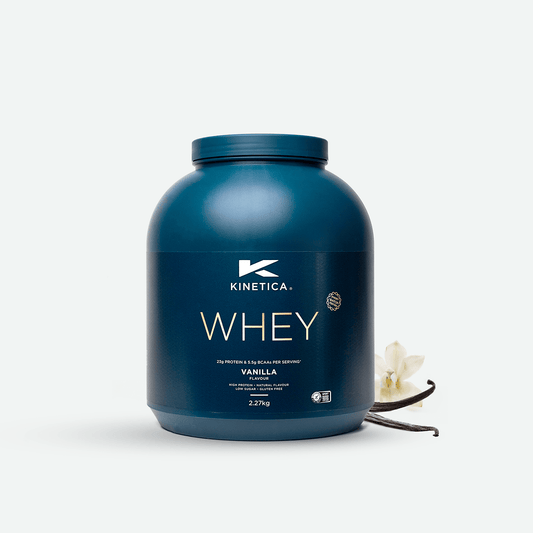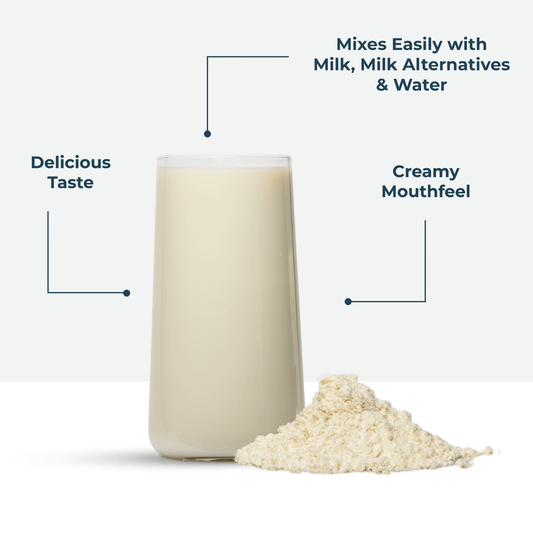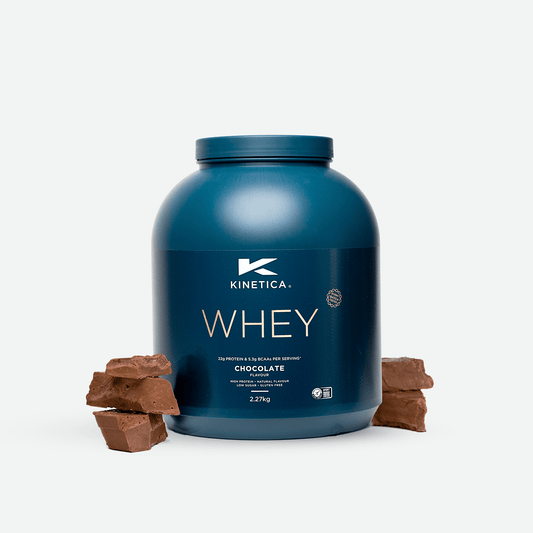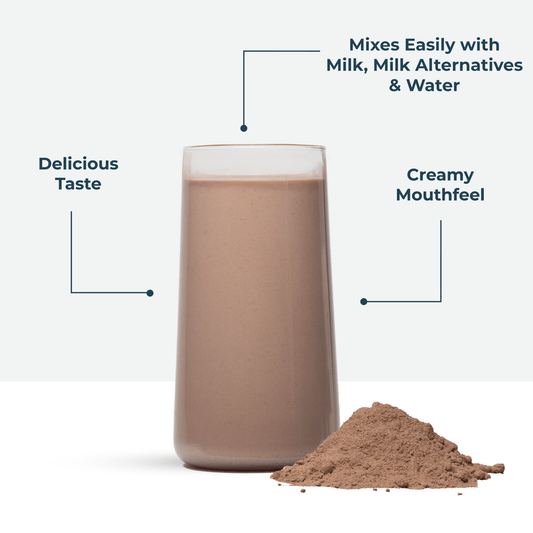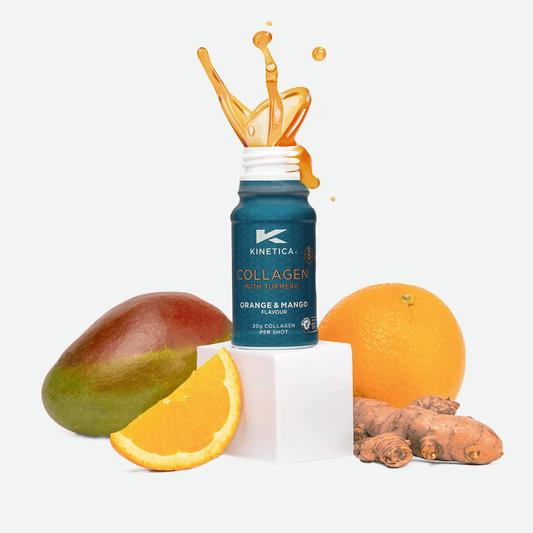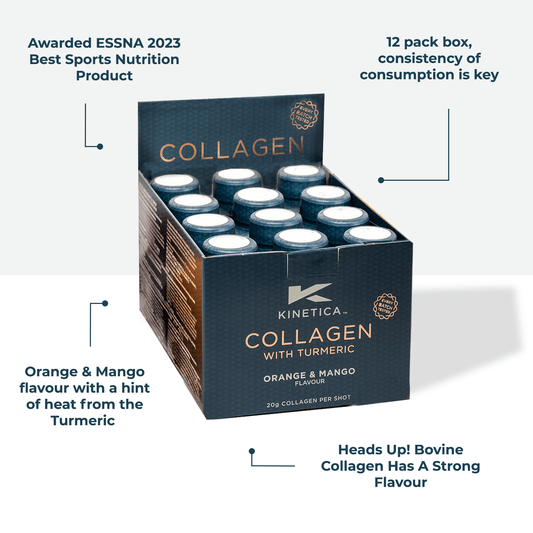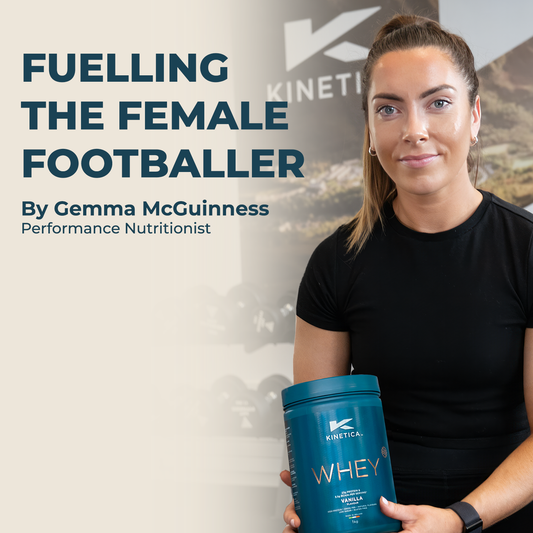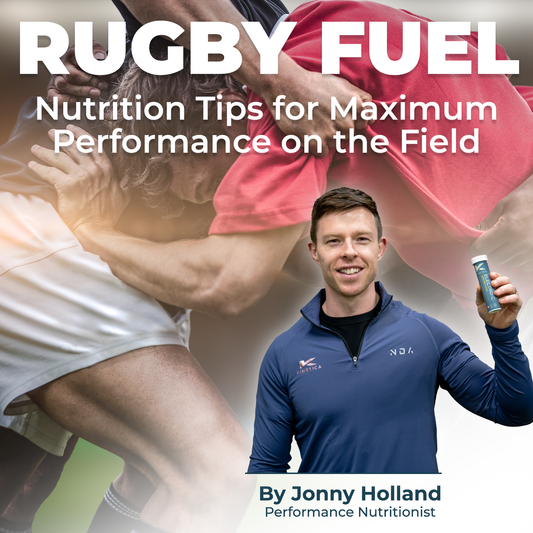Healthy Eating Habits Small Changes, Big Wins

Have you ever tried to upgrade your nutrition habits and struggled? If so, you are not alone. Even if you are fit and healthy and love working out, nutrition is a peculiar beast and an area of wellness that many people find difficult to improve.
In this post, we'll explain why nutrition is one of the most challenging areas of our wellbeing to crack and give you solutions you can leverage to make small, iterative improvements in your diet that compound over time to generate better results. This post is broken down into three parts:
- The Challenge: Why improving nutrition can feel complicated.
- The Solution: How to change any lifestyle habit for better results.
- Nutrition Tips: Ten dietary changes to improve your health, energy and body.
We are excited to help and give you greater control over your wellbeing.
The Challenge: Why Upgrading Nutrition Can Feel Hard
Everyone wants the magic bullet: the golden nugget in nutrition that changes everything—whether that's a diet or a specific supplement that moves the needle forever. This is understandable, yet 100% guaranteed to fail. But why?
First, we are all wise enough to know that no one "thing" will transform our health. Our current wellbeing is determined by a blend of factors beyond diet - including genetics, health history, and lifestyle. The latter combines many elements such as sleep, diet, exercise, stress, workload, emotions, community, and physical environment—to name but a few.
But there is something more. Even with the best nutrition advice, we still need help making lifestyle changes stick. As the Armed Forces say, "the best-laid plan rarely survives first contact". That's because, in war, theory and reality collide in the most unforeseen ways. It's similar in nutrition. In theory, we might know what to do, but that collision with the real world makes upgrading habits harder than it appears at first sight.
Even worse, when we struggle, we are too quick to blame ourselves and give up on our goals. This stops you from achieving the success that you can have. Such a scenario is described perfectly in the book 'Tiny Habits' by author B.J. Fogg, a behaviour change expert from Stanford University:
"For too many years, myths, misconceptions, and well-meaning but unscientific advice have set you up to fail. If you've attempted change in the past and haven't seen results, you may have concluded that change is hard or that you can't succeed because you lack motivation. Neither is accurate. The problem is with the approach itself, not with you. Think of it this way: If you tried putting together a chest of drawers with faulty instructions and parts missing, you would feel frustrated. But you probably wouldn't blame yourself for this, would you? You would blame the manufacturer instead. When it comes to failed attempts at change, we almost never blame the "manufacturer." We blame ourselves."
Multiple barriers prevent us from being successful with diet changes. For the sake of simplicity, you can divide these barriers into three categories: psychological, physiological, and environmental. Let's look at some examples from each category.
1. Psychological Factors:
Several mental and emotional factors prevent us from following the diet we plan to follow. For example, we all eat in response to certain emotions rather than actual hunger. Some of us eat when we are stressed, others when we feel anxious, and many when we feel down. The research on emotional eating is well-established here. In this respect, it can be hard to change eating patterns until we also care for underlying emotions.
2. Physiological Factors:
Underlying health also impacts how we eat. For example, research shows that imbalances in the gut microbiota can affect appetite. Poor blood sugar control and glucose crashes ('reactive hypoglycemia') can also cause people to choose sugary foods. Our day-to-day energy is also a massive factor in the type of food we eat. When we are tired and worn out, willpower is compromised, and we can easily find ourselves vacuuming all kinds of food we did not intend to eat. Energy and physiology very often drive the bus.
3. Environmental Factors:
Our immediate environment is also a significant factor influencing our food choices. For example, the immediate availability of junk food at work, in the car, and at home makes it very easy to consume more calories than we want—even when we are motivated to eat less and get in shape. Research suggests that our physical and social environment is crucial to obesity trends. In this respect, we must modify our environment to make healthy eating habits easier. A diet plan alone is not enough.
The Solution
So, what can you do? How do you go about it if you want to eat healthier or transition into a new dietary pattern? The answer is small sequential lifestyle changes that you stack on each other over time to build a better body and deep health.
Think of healthy eating habits like earning interest on your investments. When you first start investing in your wealth, there's little to shout about. But as you put money aside and earn compound interest, wealth builds its own momentum.
It's the same in our health. What starts as tiny changes compounds over time, and you get great results. I have seen this time and again in nearly 25 years of practice. It's all about small, meaningful changes that stack on top of each other, shift physiology and lead to disproportionate results down the line. It's no "7-minute abs", but we all know that's nonsense anyway.
In the classic book Atomic Habits, author James Clear uses a great metaphor to describe the impact of small ongoing habit change:
"The impact created by a change in your habits is similar to the effect of shifting the route of an airplane by just a few degrees. Imagine you are flying from Los Angeles to New York City. If a pilot leaving from LAX adjusts the heading just 3.5 degrees south, you will land in Washington, D.C., instead of New York. Such a small change is barely noticeable at takeoff—the nose of the airplane moves just a few feet—but when magnified across the entire United States, you end up hundreds of miles apart."
Perfect. This metaphor is also particularly relevant to nutrition because, unlike in fitness, where you might train three times per week, in nutrition, you might eat three times per day. These meals stack quickly.
There is another way to think about it: you constantly make a brand new body from the food and fluid you consume:
- You create 2 million new red blood cells every second (Talasaz, Sadeghipour et al. 2021).
- You replace the lining of your gut every four to five days (Kong, Zhang and Zhang 2018).
- Your skin, the largest organ in your body, is replaced every six weeks (Koster 2009).
Reflecting on this insight into renewal is also incredibly liberating. If your body is constantly changing, you can too. This means that your past is not your future, and you can get great results. You just need to know how to master habits and adopt useful nutrition tips, and the rest will fall into place.
Here are three ways to master new habits:
1. Cue your environment: Change your work and home environment so that it is easy to make small healthy choices and hard to make reactive unhealthy food choices. For example, if you want to start taking a supplement, leave it visible next to something you use daily - such as your toothbrush or kettle - to make positive change easy.
2. Start small: We mean small—like the tiniest change you can make. It must initially feel like a no-brainer with zero resistance. For example, rather than trying to follow a new 7-day food plan, change one meal. Simply master one new meal. When you are ready, iterate on the next meal. Before you know it, you will have multiple healthy meals that feel easy to make. Build momentum gently but systematically.
3. Embrace habit stacking: Habit stacking is a strategy that involves linking a new habit to an existing one, creating a chain of behaviours that support each other. This concept is particularly effective because it leverages the established neural pathways of an existing habit to embed a new one. For example, when you get your gym kit on, immediately fill a water bottle and add an electrolyte. In this way, you use an existing habit (exercise) to anchor a new one (nutrition).
As you make these changes, you can also do a few other things to make habits stick. First, track your new habit to remain aware of it. It keeps positive change at the forefront of your mind, which is useful initially. Second, get social support. Staying accountable to others and teaching them what you are doing makes change part of your identity and belief system. This helps to embed change. Third, attach a positive story to a new habit when you are doing it. You want to create meaning out of the smallest changes, reinforcing why it matters and how it stacks results in your favour over time.
Small Wins That Stack
Now that you know how to set your lifestyle up to win, here are ten tiny changes that will help you achieve better results. I am using the B.J. Fogg approach to behaviour change, which leverages old habits to build new ones. Each one is written in a particular way: "When I do X, then I will do Y." Feel free to adjust the tips below to make them work for you.
Habit Stack #1: After I wake up, I will immediately drink a glass of water.
Benefit: This is one way to support overall fluid intake, which supports optimal cognition, immune health and exercise performance (Sawka, Cheuvront and Kenefick 2015).
Habit Stack #2: After I eat my breakfast, I will immediately take my supplements.
Benefit: This can help you avoid nutrient deficiencies, support energy and increase sports performance (Maughan 2018)
Habit Stack #3: After I sit at my computer to begin work, I will immediately eat a piece of fruit with a tablespoon of nuts and seeds.
Benefit: This Mediterranean style of eating can help protect cardiovascular health (Laffond, Rivera-Picon et al. 2023).
Habit Stack #14: Before I eat my main lunch, I will have a small salad.
Benefit: Eating a salad before a meal is a simple way to increase nutrient density, and the fibre may help prevent overeating (Macready, George et al. 2014).
Habit Stack #5: After I finish my workout, I will drink a smoothie with a banana and protein powder.
Benefit: Taking on sufficient protein daily is vital to support healthspan and lifespan (Phillips, Chevalier and Leidy 2016).
Habit Stack #6: After I finish my afternoon work, I will eat three carrot sticks with hummus.
Benefit: The combination of colourful veggies with high-quality protein, fats and fibre found in hummus can support nutrient intake and energy (Reister, Belote and Leidy 2020).
Habit Stack #7: After I sit down for dinner, I will take three deep breaths before I start eating.
Benefit: Slow, deep breathwork improves parasympathetic levels (the autonomic nervous system's ‘rest and digest’ branch), supporting healthy digestion and assimilation (Laborde, Allen et al. 2022).
Habit Stack #8: After I finish dinner, I will drink a cup of herbal tea."
Benefit: Camomile and other herbal teas can offer some cardiometabolic protection, supporting overall health (Wang, Ma et al. 2022).
Habit Stack #9: After I go to bed, I will plan my breakfast for the next day."
Benefit: Planning the night before can help you become more intentional about priority habits, support behaviour changes, and increase the likelihood of achieving goals (Oscarsson, Carlbring et al. 2020).
Habit Stack #10: Before I go to sleep, I will take five minutes to write a gratitude journal.
Benefit: Taking time to experience gratitude can support digestive health by reducing sympathetic stress and increasing restorative parasympathetic levels in the body (Redwine, Henry et al. 2016).
This is habit engineering and pivotal to long-term success. In isolation, each healthy eating habit does not feel like much. However, when you view these habits as a package, you can imagine how they stack up to support your health, energy, and performance. I hope it helps you.
References
Kong, S., Y. H. Zhang and W. Zhang (2018). "Regulation of Intestinal Epithelial Cells Properties and Functions by Amino Acids." Biomed Res Int 2018: 2819154.
Koster, M. I. (2009). "Making an epidermis." Ann N Y Acad Sci 1170: 7-10.
Laborde, S., M. S. Allen, U. Borges, F. Dosseville, T. J. Hosang, M. Iskra, E. Mosley, C. Salvotti, L. Spolverato, N. Zammit and F. Javelle (2022). "Effects of voluntary slow breathing on heart rate and heart rate variability: A systematic review and a meta-analysis." Neurosci Biobehav Rev 138: 104711.
Laffond, A., C. Rivera-Picon, P. M. Rodriguez-Munoz, R. Juarez-Vela, R. Ruiz de Vinaspre-Hernandez, N. Navas-Echazarreta and J. L. Sanchez-Gonzalez (2023). "Mediterranean Diet for Primary and Secondary Prevention of Cardiovascular Disease and Mortality: An Updated Systematic Review." Nutrients 15(15).
Macready, A. L., T. W. George, M. F. Chong, D. S. Alimbetov, Y. Jin, A. Vidal, J. P. Spencer, O. B. Kennedy, K. M. Tuohy, A. M. Minihane, M. H. Gordon, J. A. Lovegrove and F. S. Group (2014). "Flavonoid-rich fruit and vegetables improve microvascular reactivity and inflammatory status in men at risk of cardiovascular disease--FLAVURS: a randomized controlled trial." Am J Clin Nutr 99(3): 479-489.
Maughan, R. J. (2018). "IOC Medical and Scientific Commission reviews its position on the use of dietary supplements by elite athletes." Br J Sports Med 52(7): 418-419.
Oscarsson, M., P. Carlbring, G. Andersson and A. Rozental (2020). "A large-scale experiment on New Year's resolutions: Approach-oriented goals are more successful than avoidance-oriented goals." PLoS One 15(12): e0234097.
Phillips, S. M., S. Chevalier and H. J. Leidy (2016). "Protein "requirements" beyond the RDA: implications for optimizing health." Appl Physiol Nutr Metab 41(5): 565-572.
Redwine, L. S., B. L. Henry, M. A. Pung, K. Wilson, K. Chinh, B. Knight, S. Jain, T. Rutledge, B. Greenberg, A. Maisel and P. J. Mills (2016). "Pilot Randomized Study of a Gratitude Journaling Intervention on Heart Rate Variability and Inflammatory Biomarkers in Patients With Stage B Heart Failure." Psychosom Med 78(6): 667-676.
Reister, E. J., L. N. Belote and H. J. Leidy (2020). "The Benefits of Including Hummus and Hummus Ingredients into the American Diet to Promote Diet Quality and Health: A Comprehensive Review." Nutrients 12(12).
Sawka, M. N., S. N. Cheuvront and R. W. Kenefick (2015). "Hypohydration and Human Performance: Impact of Environment and Physiological Mechanisms." Sports Med 45 Suppl 1: S51-60.
Talasaz, A. H., P. Sadeghipour, M. Aghakouchakzadeh, I. Dreyfus, H. Kakavand, H. Ariannejad, A. Gupta, M. V. Madhavan, B. W. Van Tassell, D. Jimenez, M. Monreal, M. Vaduganathan, J. Fanikos, D. L. Dixon, G. Piazza, S. A. Parikh, D. L. Bhatt, G. Y. H. Lip, G. W. Stone, H. M. Krumholz, P. Libby, S. Z. Goldhaber and B. Bikdeli (2021). "Investigating Lipid-Modulating Agents for Prevention or Treatment of COVID-19: JACC State-of-the-Art Review." J Am Coll Cardiol 78(16): 1635-1654.
Wang, P., X. M. Ma, K. Geng, Z. Z. Jiang, P. Y. Yan and Y. Xu (2022). "Effects of Camellia tea and herbal tea on cardiometabolic risk in patients with type 2 diabetes mellitus: A systematic review and meta-analysis of randomized controlled trials." Phytother Res 36(11): 4051-4062.


